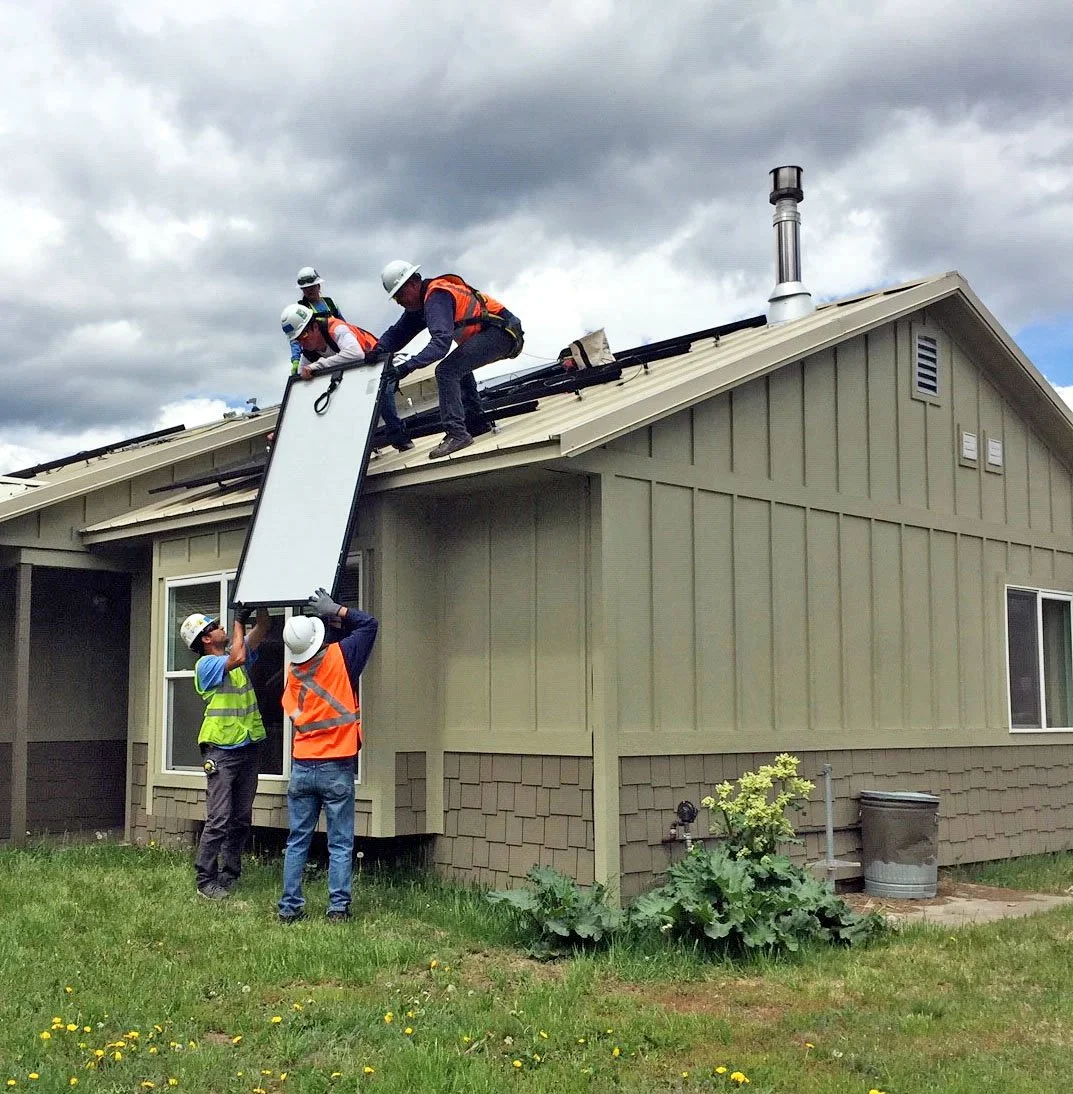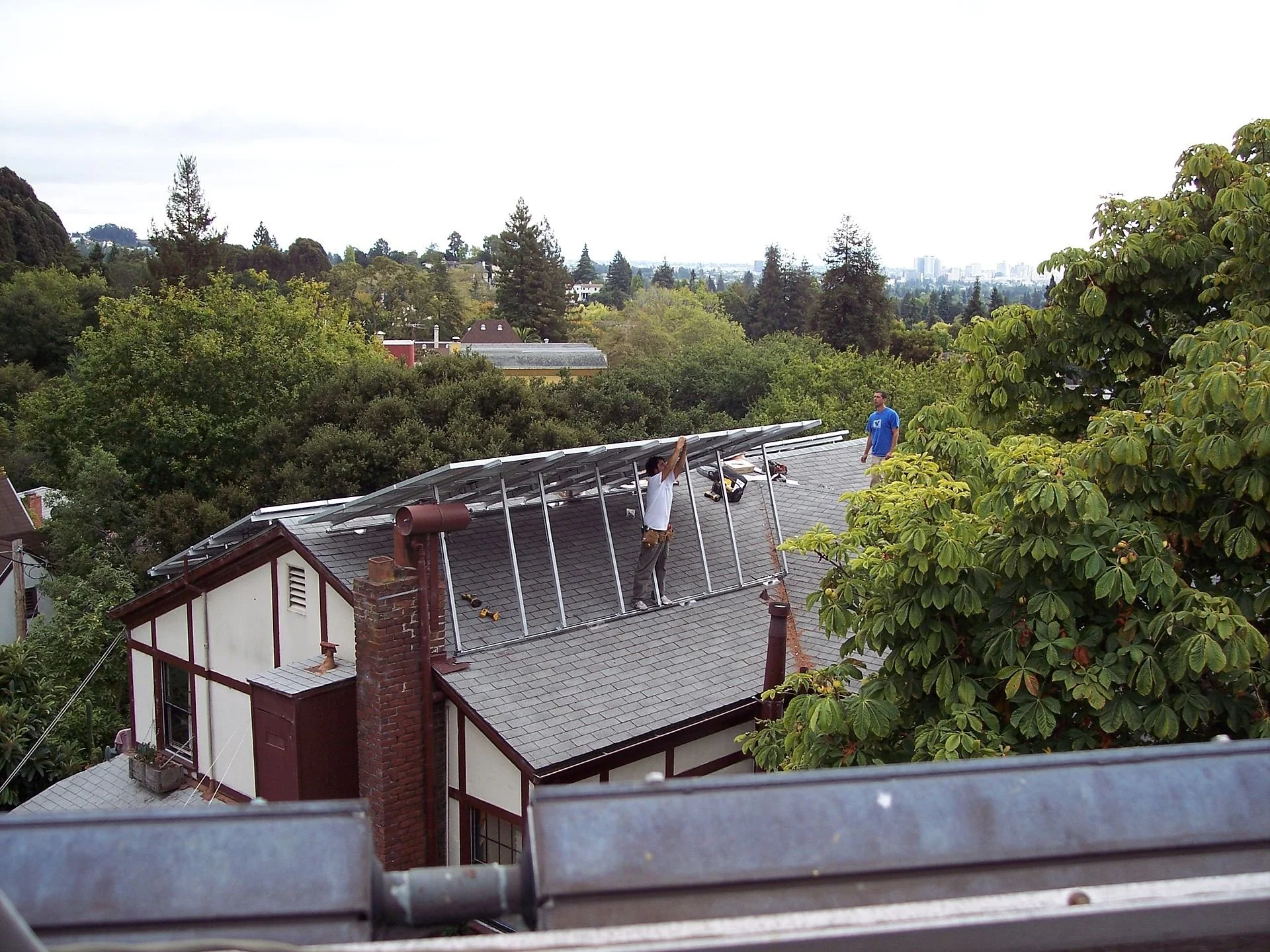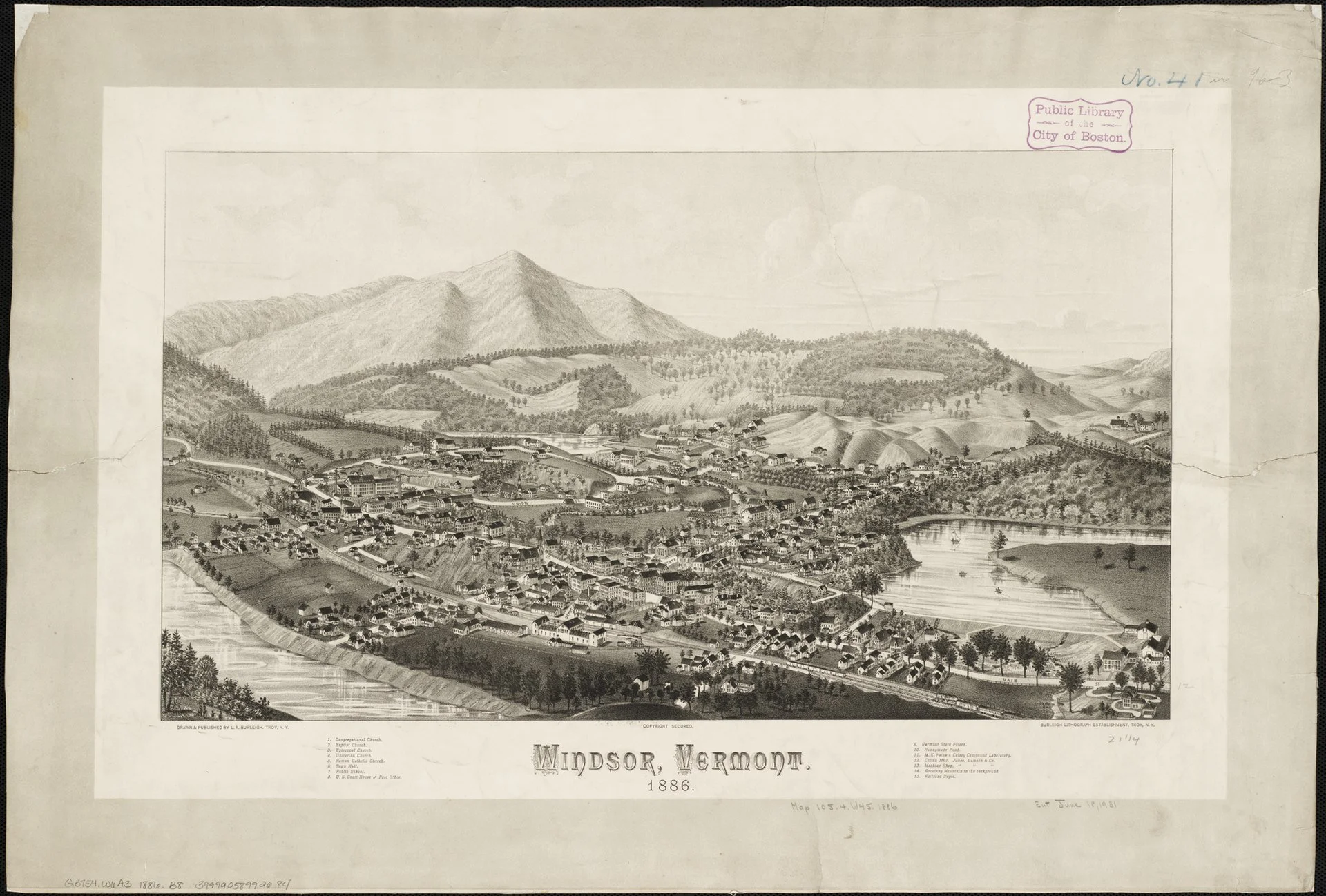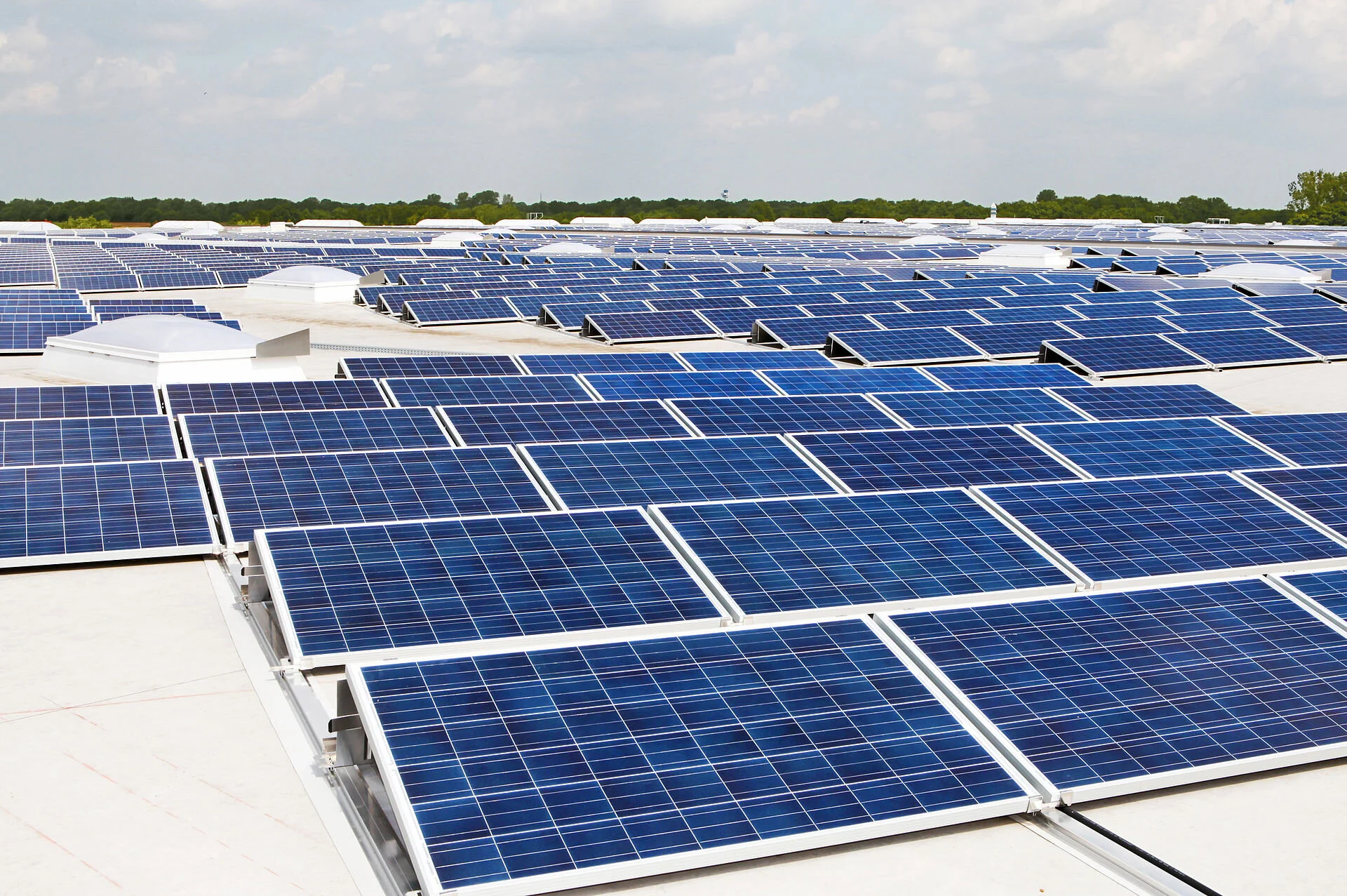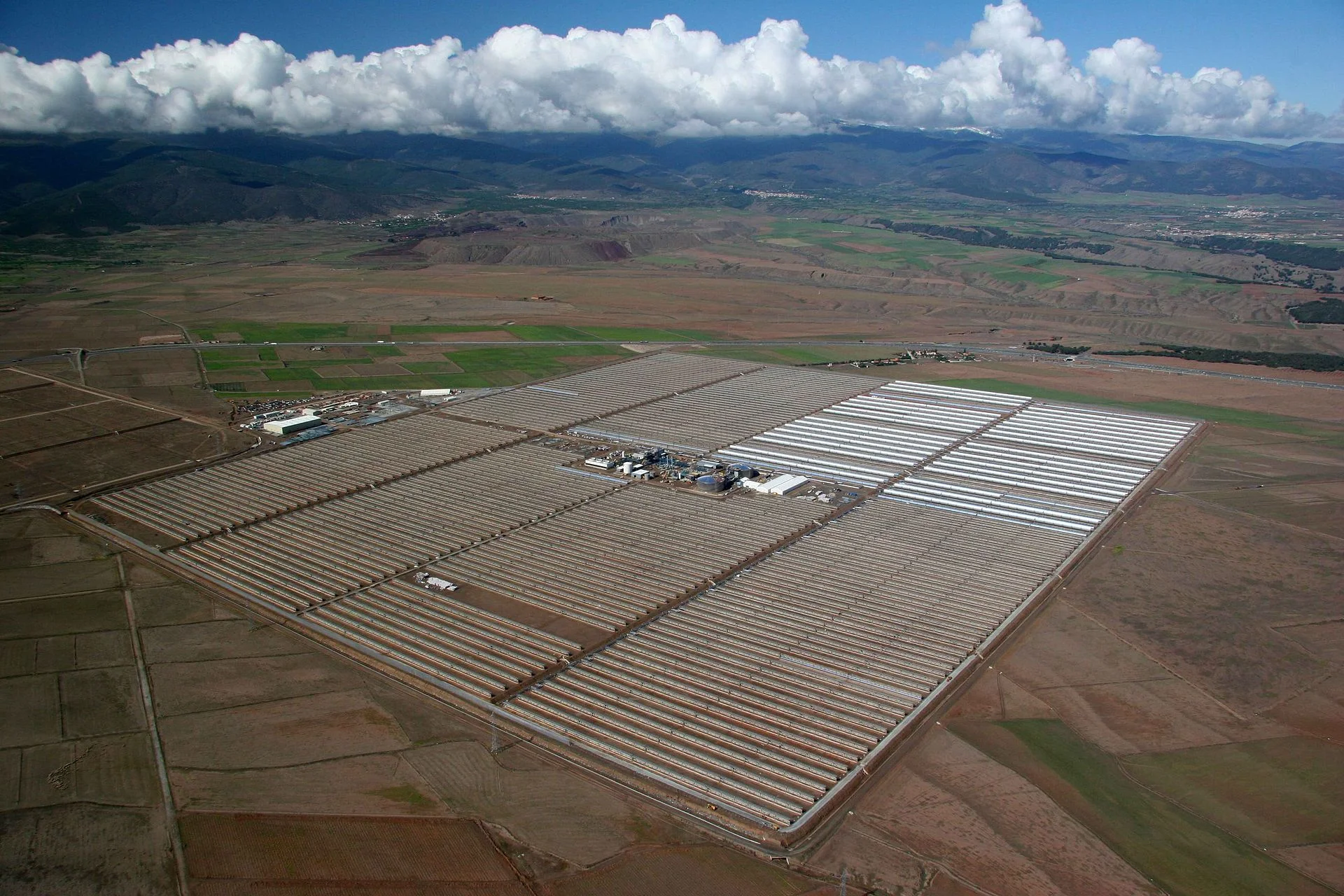
Llewellyn King: Uberizing your solar-paneled roof
WEST WARWICK, R.I.
The Uber model is changing America. First it made a business out of the family car. Then it made a business out of the spare room or vacation house.
Soon it might make a business out of the roof over your head.
That is the dream of a group of hugely successful entrepreneurs who see roofs as the next big monetization of a widely held capital asset.
This group, which at present chooses to remain anonymous, believes that with the right communications network and smart computer linkage, the nation’s sun-trapping roofs could become a new source of electricity and, if connected to in-home batteries, a virtual power plant of scale and reliability.
What Uber did for ride sharing and what Airbnb did for lodging, these entrepreneurs believe could be done for the electric-utility industry.
One of them told me, “A network can be many different things, but in the context of a network of potentially millions of solar rooftops, it means virtually real-time capture and analysis of billions of data points. Only a wireless network, using the latest broadband technologies – similar to those that support our smart phones – can handle that workload.”
Rewind the clock to when solar cells became generally available: Utilities encouraged their use and bought electricity from customers when it was generated, not when it was needed.
At the same time large solar plants began to be developed and owned by the utilities, which worked better for them, and they soured on rooftop solar.
In talking to utilities, I find them to be cool-to-indifferent to rooftop solar but enthusiastic about solar central station generation, particularly if linked with battery storage. Mostly, utilities like solar generation because of its predictability.
The idea of hooking together a vast network of millions of solar panels on roofs with their own batteries puts demand back in the hands of the utilities, giving them the flexibility of having a great new resource.
Also, like the Uber model, there would be variable pricing: In a crisis or a high-demand situation, the utility or the system operator would order power from homeowner batteries at surge prices, befitting all. Owners of solar rooftop and battery setups would become “citizen solarizers.”
The concept of a vast, on-demand, virtual power plant isn’t entirely speculative. Brian Keane, president of SmartPower, told me that what might be a frontrunner is already being tested in Connecticut.
“All residential customers who choose the ‘Connecticut Green Bank’s CT Storage Solution’ option receive the generous, upfront rebate incentives for agreeing to have their battery drawn from every weekday afternoon during June, July, and August, as well as on high-need 'critical’ days on the weekends, in September, and for a handful of days during the winter months. Customers will get a payment each year based on the amount of electricity that is drawn from the battery,” Keane explained.
The development of a national virtual power system would enhance something that is happening quietly, which is what I call the “buttressing of the grid.”
It is what might be seen as the tacit acceptance that the grid isn’t going to be rebuilt in any substantial way, but it will be buttressed by new generation and limited new transmission. Uberizing rooftop solar could be an important part of this buttressing – and a gift to the nation both as a source of clean power and citizen involvement.
It remains to be seen whether regional solar networks would be subject to regulation by the federal government or by the states.
Going forward, a rooftop solar installation might be more than a convenience for a household, and a way of signaling green virtue.
Llewellyn King is executive producer and host of White House Chronicle, on PBS. His email is llewellynking1@gmail.com and he’s based in Rhode Island and Washington, D.C.
Solar arrays and trees
On roofs when possible.
Adapted from Robert Whitcomb’s “Digital Diary,’’ in GoLocal24.com
Inevitably, some residents of New England suburban or exurban areas are duking it out with solar-energy developers. The residents complain that too much open land and woods are being taken for the solar arrays near them. Two recent hot spots for these fights are Johnston, R.I., and cranberry-bog country in Wareham and Carver, Mass.
Well, the world is heating up and the more renewables we use the worse it is for such murderous petrostate dictators as Vladimir Putin. And bear in mind that much land being eyed for solar arrays might instead be turned into housing projects if the solar is blocked. Most locals would probably hate that even more than “solar farms,’’ in part because local property taxes would have to go up to pay for public services.
The saddest thing in this is cutting down woods to make way for the arrays. Of course, trees are huge absorbers of the carbon dioxide spewed out by our burning fossil fuel. But putting up solar arrays more than makes up for the loss of the equivalent space in woodland in terms of CO2 control, at least given current and projected technology and (wasteful!) electricity use. (The Ukraine war and the energy crisis it has caused is speeding renewable-energy research and development.)
John Reilly, co-director of MIT's program on the science and policy of global change, estimated for WGBH how much power would be generated if about 2.5 acres were clear cut to put up solar panels. WGBH reported: “He figured out you’d make up for all the carbon stored in those trees in just 46 days, if you were preventing that same amount of energy from being generated by carbon-emitting coal, or 23 days, if you were offsetting natural gas.’’
He said: “’There is a carbon loss from the trees, but it's made up fairly quickly. You're going to operate that solar panel for 20 years."’
Of course, the flora and fauna in woods should be protected as much as possible amidst the urgent need for us to burn much less natural gas and oil. Still, there’s a little bit of irony here. Much of the woodland that neighbors are trying to protect was open farmland in the early and mid 19th Century, before competition from Midwest farms and the rise of manufacturing in New England drew most people off the farms and the woods grew back. Take a look at some old pictures.
In any case, solar developers should make sure that there’s vegetation (to give off oxygen and provide a bit of ecosystem for birds and animals) under the arrays and not just barren dirt. And hire goats to keep it from getting too high?
There will be painful, or at least inconvenient tradeoffs as we wean ourselves off the still necessary poison that is fossil fuel.
We certainly could do much more to minimize the aesthetic pain of some neighbors by putting solar panels on many more buildings large and small instead of on land. Use, for example, those vacant parking lots at dead malls and elsewhere for solar arrays, while waiting for new clean-energy sources, be it hydrogen, fusion or something else to come on line. There’s probably a recession coming soon, slowing building construction and cooling property-price inflation. Take advantage of that to take more vacant urban and suburban land for solar?
Hit this link for the WGBH trees vs. solar story.
More trees now.
Note the open land.
Brian P.D. Hannon: Of solar power and lots of tomatoes
Young tomato plants for transplanting in an industrial-sized greenhouse.
- Photo by Goldlocki
From ecoRI News (ecori.org)
National Grid has offered incentives to a company proposing to build a massive farm facility in rural Exeter, R.I., in exchange for access to the solar power expected to help grow millions of tomatoes in temperature-controlled greenhouses.
A June 24 letter from National Grid senior counsel Andrew Marcaccio to Luly Massaro, a division clerk for the Rhode Island Division of Public Utilities and Carriers, states National Grid will offer “energy efficiency incentives” to Rhode Island Grows LLC “for the utilization of a combined heat and power project with a net output of one megawatt ... or greater.”
A capacity of 1 megawatt or more is a utility-scale installation for solar power.
National Grid asks the public utilities and carriers division to follow an authorized process for combined heat and power (CHP) projects by reviewing materials submitted with the letter, including a purchase-and-sales agreement from Rhode Island Grows related to the project, an estimated budget, benefit cost analysis and a November 2020 analysis providing “well-supported justification explaining why the economic benefits are reasonably likely to be obtained.”
The letter’s attachments also include a report on the natural-gas requirements and local impact of the operation.
“These documents represent a report including a natural gas capacity analysis that addresses the impact of the CHP Project on gas reliability; the potential cost of any necessary incremental gas capacity and distribution system reinforcements; and the possible acceleration of the date by which new pipeline capacity would be needed for the relevant area,” according to the letter.
National Grid’s letter asked the public utilities and carriers division to review the materials and provide an opinion either supporting or opposing the proposal by Aug. 13.
Gail Mastrati, assistant to the director of the Rhode Island Department of Environmental Management (DEM), supplied a link tracking the progress of the wetland permit sought by Richard Schartner, owner of the Schartner Farms property where Rhode Island Grows plans to build a 1-million-square-foot closed facility.
Asked if Rhode Island Grows is required to file separate permit applications for a solar array capable of producing more than 1 megawatts of power, Mastrati said the wetland and stormwater permit “is based on the size of the solar arrays, not the power output. If the number of solar panels were to increase, a new or modified permit would be required.”
“DEM does not permit the power output, just the size of the facility as indicated on the site plans,” Mastrati wrote in an email.
Mastrati declined to reveal the name of the company providing solar array services to Rhode Island Grows.
“DEM does not get involved with the choosing of the company to perform the work,” she said. “It is up to the owner to ensure that the contractor completes the work according to the permit.”
Rhode Island Grows chairman Tim Schartner and chief financial officer Frederick Laist did not respond to a request for comment.
The Rhode Island Grows project has drawn the support of Ken Ayars, chief of the Rhode Island Department of Environmental Management’s Division of Agriculture, as well as criticism from some Exeter residents concerned about the environmental and cultural impact of the massive growing operation that would use high-tech greenhouses to grow millions of tomatoes for distribution in six states throughout the Northeast.
Rhode Island Grows proposes to use a technology called controlled environment agriculture. The automated, hydroponic system can produce food on a large scale and has resulted in extensive agricultural production in the Netherlands, according to a video on the Rhode Island Grows website.
The company projects the operation could yield 650,000 pounds of tomatoes per acre, with an expansion to 350 acres in five years and eventually to 1,000 total acres, with five employees per acre.
The Exeter Town Council voted June 7 to return the Rhode Island Grows proposal for a zoning overlay district to the Planning Board for further consideration. The overlay would allow construction of the industrial-scale operation on the Schartner Farms property off South County Trail, where Rhode Island Grows prematurely broke ground June 1.
The five members of the council did not respond to a request for comment on the National Grid letter.
Brian P.D. Hanlon is an ecoRI News journalist.
Lemonade from lemons
— Photo by AleSpa
From Robert Whitcomb’s “Digital Diary,’’ in GoLocal24.com
This might be the most significant news around here lately. Cambridge-based Synapse Energy Economics has done a study, commissioned by the State of Rhode Island, that concludes that new solar arrays on already-developed land such as parking lots and brownfields could power many, many Rhode Island homes. With malls and some free-standing big-box stores closing, there will be more and more such available space on abandoned parking lots. And of course there are plenty of flat roofs available. It beats chopping down more trees or building over old farm fields to make space for more rural solar farms.
To see/hear a video on this big business and environmental opportunity, please hit this link.
Llewellyn King: 'Renewable energy' is a disingenuous phrase
Solar-energy facility in Andalusia, Spain.
-- Photo by BSMPS
I’m a tree-hugger. Yep, an environmentalist, but I wouldn’t care to be known as such. Just the word suspiciously signals virtue, and environmentalists and their movement haven’t always been on the side of the environment.
In the 1970s and 1980s, I sat through many meetings when environmentalists advocated for coal over nuclear. That’s like their original sin.
Today, quite a few who care about the environment realize that that was a mistake – a bad mistake. Reluctantly, many have come to see that nuclear is a carbon-free and a very compact source of a lot of electricity.
But long years of environmental opposition have taken their toll on public acceptance and on the economics of new plants. Delay, obfuscations and untruths about both nuclear safety and nuclear waste came together to hobble the industry over the past 40 years.
Waves of anti-nuclear campaigners, like Ralph Nader and Amory Lovins, have been so keen to oppose nuclear that they’ve allowed the environment to receive untold millions of tons of carbon, which wouldn’t have been the case if they hadn’t chosen to wage war on a single technology.
Blame some of this on the 1960s. It was the decade in which the establishment was under attack as never before.
It was a decade in which the young, faced with the draft and Vietnam, started to look at society and the powers that controlled it. They found that the establishment and its institutions could be held accountable for much that was wrong.
Foremost was the war in Vietnam. Then there was the civil rights movement, where it was seen that large institutions had condoned, if not promoted, racial segregation and oppression. Along the way, there was the start of the women’s movement with books like Betty Friedan’s Feminine Mystique, published in 1963.
And, of course, there was the environmental movement itself, ignited by Rachel Carson’s book Silent Spring, published in 1962. The establishment, the grownups, had been weighed and found wanting.
Meanwhile ,the utility industry was happily buying into nuclear power. Growth rates in electric demand had been at 7.5 percent a year for most of the post-World War II period, and utilities thought they needed a huge amount of new power. Actually, demand was leveling off. Nuclear looked like the solution, and the utilities were unrecognizing of the complexity of the technology. One Atomic Energy Commission member, Lewis Strauss, even predicted electricity “too cheap to meter.”
Proponents of nuclear gave its enemies a devasting advantage, a lethal handle. They created a licensing procedure that gave the public unrestricted access to intervene in nuclear licensing.
Nuclear was a fundraising gift to the environmentalists -- a gift that kept on giving.
The environmental movement, having found the devil back then, has found twin holy grails today: solar and wind. The movement is promoting them with the same fervor, the same blind certainty with which they once opposed nuclear.
Is the movement going too far again? Certainly, improvements in batteries will overcome the intermittent nature of both sources. But they can’t overcome the second law of thermodynamics: You can’t get more electric energy out of a square meter of a solar cell than sunlight falls on it. That’s absolute. Likewise, with wind: No more energy can be extracted from the wind than it contains. More research won’t change that.
On the other hand, more nuclear research will produce everything from better power plants, to ships and submarines, to nuclear waste-eating reactors. That’s saying nothing about medicine or space exploration.
A few windmills are delightful. Thousands of them are terrifyingly ugly. Hundreds of thousands of them are being installed.
Likewise, solar panels. Those on the roof at Walmart are great. Thousands and thousands of acres of Southwest desert or good farmland anywhere going down to solar farms is less appealing.
Low density in electricity production means heavy, possibly abusive land use, as demand for wind and solar is pushed. By contrast most nuclear problems will be solved by science, including waste.
Group-think in the environmental movement severely impacted nuclear as an option. Now the group passion for “renewables” may be another wrong environmental turn.
"Renewable'' is a disingenuous word: All those wind towers, turbines and solar panels will have to be dismantled and disposed at the end of their productive life. That detritus isn’t renewable.
Llewellyn King is executive producer and host of White House Chronicle, on PBS. His email is llewellynking1@gmail.com.
5 new solar farms in Mass.
This is from the New England Council (newenglandcouncil.com):
"New England Council (NEC) members Blue Cross Blue Shield of Massachusetts and Ameresco are celebrating the opening of five new solar farms across Massachusetts.
"Three of the projects are on the 650-acre Twin Elm Farm in Mendon and the other two are in Hopedale. The projects hold a combined 6.9 megawatts of renewable power and will increase solar production in Massachusetts by 13%, lower carbon emissions and help almost 200 local residents and businesses to lower their electricity bills. The solar farms are owned by Ameresco, co-developed by BlueWave Solar and supported by Blue Cross Blue Shield, which purchased 2.6 MW of net metering credits that will be applied to its utility bills. The opening of the solar farms was celebrated with ribbon cutting at the Twin Elm Farm in Mendon in August 2017.
“'Community solar projects like these allow local citizens and businesses to benefit directly from the energy produced by these projects,' said Michael T. Bakas, Senior Vice President, Ameresco. 'We are honored to support Blue Cross, a leader in providing high-quality health care, in their efforts to positively impact the environment. Their commitment to sustainability and environmental stewardship is a model for all to follow.”'
